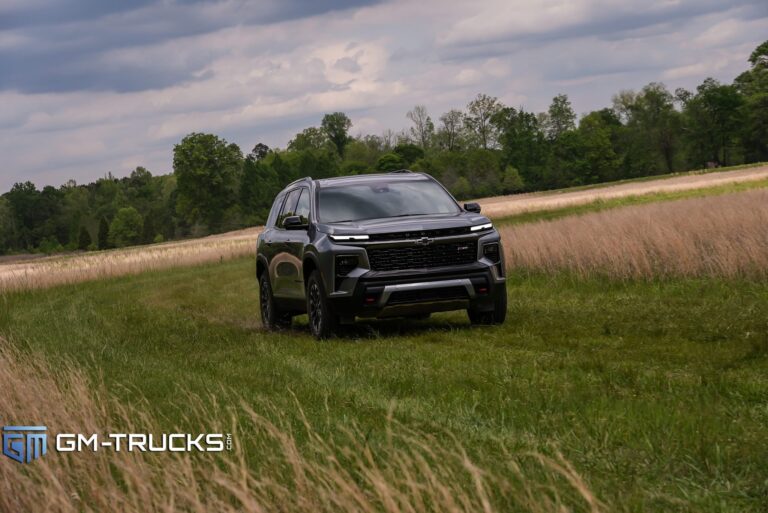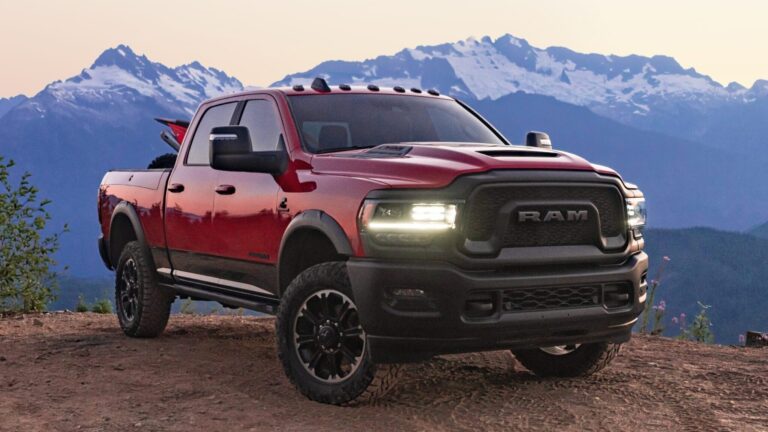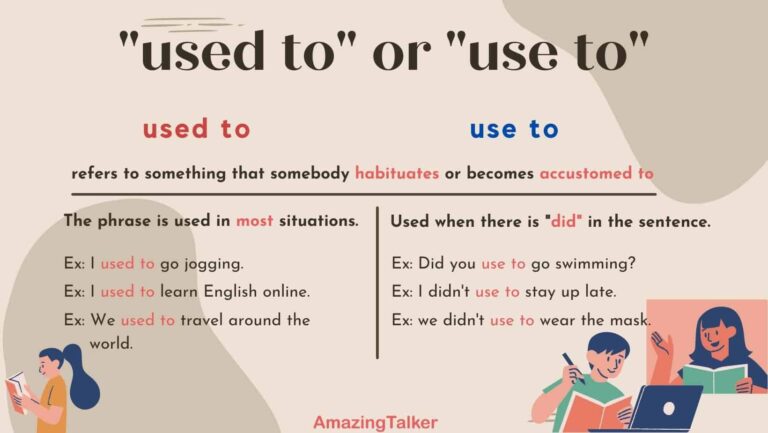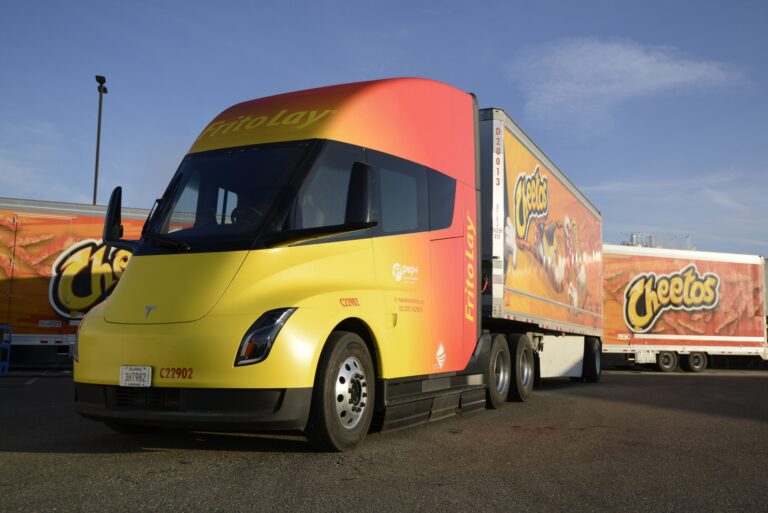C20 Chevy Trucks For Sale: A Comprehensive Buyer’s Guide
C20 Chevy Trucks For Sale: A Comprehensive Buyer’s Guide cars.truckstrend.com
The rumble of a classic V8, the unmistakable silhouette of an American workhorse, and the enduring legacy of a bygone era – these are just some of the reasons why C20 Chevy trucks continue to capture the hearts of enthusiasts, collectors, and practical drivers alike. More than just a vehicle, a C20 Chevy truck represents a piece of automotive history, a testament to robust engineering, and a canvas for customization. If you’re considering entering the rewarding world of classic truck ownership, navigating the market for C20 Chevy trucks for sale requires knowledge, patience, and a keen eye.
This comprehensive guide aims to arm you with everything you need to know, from understanding the C20’s heritage to practical tips for finding, inspecting, and ultimately acquiring your dream truck.
C20 Chevy Trucks For Sale: A Comprehensive Buyer’s Guide
I. Understanding the C20 Chevy Truck Lineage
Before diving into the "for sale" listings, it’s crucial to understand what a C20 Chevy truck is and where it fits within Chevrolet’s storied pickup history. The "C" in C20 denotes a two-wheel-drive (2WD) configuration, while "K" would signify a four-wheel-drive (4WD) model. The "20" refers to the 3/4-ton payload capacity, placing it firmly in the heavy-duty category, a step up from the half-ton C10 and a step below the one-ton C30.
Chevrolet’s C/K series pickups spanned several iconic generations, each with its unique styling cues and mechanical advancements:
- Task Force (1955-1959): While early 3/4-ton models existed, the ’55-’59 Task Force trucks brought more modern styling and the introduction of the small-block V8.
- "Glamour" or "Fendered" (1960-1966): Known for their distinctive "eyebrow" hoods and torsion bar front suspension (early models), these trucks offer a unique vintage appeal.
- "Action Line" (1967-1972): Arguably the most popular and sought-after generation, the ’67-’72 C20s are celebrated for their clean lines, improved ride quality, and excellent parts availability. They offered a wide range of engine options, from inline-sixes to big-block V8s.
- "Square Body" (1973-1987): Defined by their angular, robust design, the "Square Body" C20s are workhorses that blend classic aesthetics with more modern conveniences like air conditioning and power steering. They are highly versatile and offer a balance of classic appeal and practicality.

C20s were built for utility, often featuring stronger frames, heavier-duty suspension components (such as leaf springs in the rear and sometimes a beefier independent front suspension), larger brakes, and higher gross vehicle weight ratings (GVWR) than their C10 counterparts. This makes them ideal for hauling, towing, or simply enjoying a more substantial classic truck experience. Their popularity stems from their timeless design, mechanical simplicity, readily available parts, and the robust nature that allows them to endure decades of use.
II. Where to Find C20 Chevy Trucks For Sale
The hunt for a C20 can be an adventure in itself. Knowing where to look is the first step in finding the right truck for your needs and budget.
- Online Marketplaces:
- eBay Motors: Offers a wide range of conditions, from project trucks to fully restored examples, with bidding and "Buy It Now" options.
- Craigslist/Facebook Marketplace: Excellent for finding local, often privately-listed trucks. Be prepared for varying levels of detail in listings and schedule quick viewings.
- Specialized Classic Car & Truck Sites: Hemmings, ClassicCars.com, Autotrader Classics, and OldRide.com are dedicated platforms for vintage vehicles, often featuring higher-quality listings and more detailed descriptions.
- Forums & Social Media Groups: Many Facebook groups and online forums are dedicated to specific C/K truck generations. These communities often have "for sale" sections and can be a great source for leads and advice.
- Classic Truck Dealers: Reputable dealers specializing in vintage trucks often have C20s in their inventory. While prices might be higher, you often get a pre-inspected vehicle and a more professional buying experience.
- Auctions: Mecum, Barrett-Jackson, and local auto auctions can be sources, especially for higher-end restored C20s. Be aware of buyer’s premiums and the "as-is" nature of auction sales.
- Local Classifieds & Word-of-Mouth: Don’t underestimate the power of traditional methods. Check local newspapers, drive around rural areas, and talk to people at car shows or local garages. You might uncover a hidden gem.
Pro Tip: When searching online, use a variety of keywords: "C20," "Chevy 3/4 ton," "Chevrolet pickup," "vintage truck," along with specific year ranges like "1969 C20" or "Square Body C20." Expand your search radius, as a short road trip can often yield better results or prices.
III. What to Look For: A Buyer’s Checklist
Once you’ve found a promising C20, a thorough inspection is paramount. Don’t let enthusiasm blind you to potential pitfalls.
- Body and Frame:
- Rust: This is the biggest enemy. Check cab corners, rocker panels, floor pans (especially under the mat), fender wells, bed floor, bed sides, and tailgate. Inspect the frame rails meticulously for rust, cracks, or previous repairs.
- Panel Alignment: Gaps around doors, hood, and tailgate can indicate accident damage or poor bodywork.
- Paint: Look for bubbling, inconsistencies, or overspray, which might hide underlying rust or damage.
- Engine and Drivetrain:
- Engine: Listen for unusual noises (knocking, ticking), excessive smoke from the exhaust (blue for oil, white for coolant, black for rich fuel), and fluid leaks. Check oil and coolant levels and condition.
- Transmission: Manuals should shift smoothly without grinding. Automatics should engage gears promptly and shift without harshness or slipping.
- Differential: Listen for humming or whining noises, especially during deceleration, which can indicate worn gears.
- Suspension and Steering:
- Shocks & Springs: Look for leaks on shocks. Check leaf springs for cracks or sagging.
- Bushings: Worn bushings can lead to clunking noises and poor handling.
- Steering: Check for excessive play in the steering wheel. Listen for groaning from the power steering pump.
- Brakes: Check the master cylinder for leaks. Test the pedal feel – it should be firm, not spongy. Ensure the truck stops straight without pulling. Many older C20s have drum brakes all around; some may have been upgraded to front discs.
- Interior: Assess the condition of the seat upholstery, dash pad, gauges (do they work?), door panels, and headliner. Test all windows, wipers, lights, and the heater/blower. Air conditioning is a bonus but often needs servicing.
- Electrical: Test all exterior and interior lights. Check for frayed or aftermarket wiring, which can be a fire hazard.
- Documentation: Always verify the title matches the VIN on the truck. Ask for any service records or restoration receipts if available.
Actionable Insight: If you’re not mechanically inclined, always arrange for a pre-purchase inspection (PPI) by a trusted independent mechanic specializing in classic vehicles. This small investment can save you thousands in hidden repairs.
IV. C20 Chevy Truck Condition Categories & Their Implications
The price and required effort for a C20 largely depend on its current condition. Understanding these categories will help you set realistic expectations.
- Project Truck: These are typically non-running, heavily rusted, or incomplete vehicles. They represent the lowest entry price point but require significant time, skill, and financial investment for restoration. Ideal for experienced DIYers.
- Driver Quality: A running, driving C20 that is presentable but not perfect. It might have some dents, faded paint, minor rust, or mechanical quirks. These are great for someone who wants to enjoy their truck immediately and perhaps improve it over time. This is often the sweet spot for many buyers.
- Restored/Show Quality: These trucks have undergone extensive, often professional, restorations. They are typically in near-perfect mechanical and cosmetic condition, ready for car shows. They command the highest prices, reflecting the substantial investment in their revival.
- Original Survivor: A rare gem that has been meticulously maintained throughout its life, retaining most of its original components, paint, and interior. These can fetch high prices, sometimes even surpassing restored examples, due to their authenticity and historical value.
V. Pricing Your C20 Chevy Truck Purchase
C20 prices vary wildly based on year, condition, engine, options, originality, and even geographical location.
-
Factors Influencing Price:
- Year: ’67-’72 "Action Line" models generally command the highest prices.
- Condition: As outlined above, this is the primary determinant.
- Engine: Original big-block V8s (e.g., 396, 402, 454) often add value, as do desirable small blocks (e.g., 350).
- Options: Power steering, power brakes, factory air conditioning, and desirable transmissions (e.g., a good manual 4-speed) can increase value.
- Originality vs. Modifications: Highly original, well-preserved trucks or professionally customized ones tend to be more valuable than poorly modified examples.
- Location: Prices can differ between regions due to demand and climate (less rust in dry climates).
-
Research Comparable Sales: Use online resources like eBay’s "Sold Listings," Hagerty Valuation Tools, and recent auction results to get a sense of market value for trucks similar to what you’re considering.
-
Negotiation: Don’t be afraid to negotiate, especially on private sales. Be prepared to walk away if the price isn’t right or if the seller is unwilling to budge on significant issues.
Estimated Price Range for C20 Chevy Trucks (As of Late 2023/Early 2024)
| Year Range | Condition Category | Estimated Price Range (USD) | Notes |
|---|---|---|---|
| 1960-1966 | Project | $3,000 – $8,000 | Often requires extensive bodywork and mechanical overhaul. |
| Driver | $9,000 – $20,000 | Running, driving, but likely has cosmetic flaws or minor mechanical needs. | |
| Restored/Show | $25,000 – $50,000+ | Pristine condition, often with upgrades. | |
| 1967-1972 | Project | $5,000 – $12,000 | Highly desirable, so even projects command a higher starting point. |
| Driver | $15,000 – $35,000 | The sweet spot for many, offering a balance of classic appeal and usability. | |
| Restored/Show | $40,000 – $80,000+ | Top-tier examples, especially with desirable engine/transmission combinations and factory options. | |
| 1973-1987 | Project | $2,500 – $7,000 | Plenty of square body projects available, good entry point. |
| Driver | $8,000 – $20,000 | Excellent value, often more comfortable and practical for regular use. | |
| Restored/Show | $25,000 – $50,000+ | Increasingly popular for full restorations and restomods. | |
| Original Survivor | Varies | $15,000 – $70,000+ | Price highly dependent on originality, mileage, and specific rare options. Can sometimes exceed restored values for truly pristine examples. |
Note: These are broad estimates and highly dependent on specific vehicle condition, mileage, engine, transmission, options, geographic location, and market demand at the time of sale. Always research comparable sales for the specific truck you are interested in.
VI. Important Considerations & Potential Challenges
Owning a classic C20 is rewarding, but it comes with unique considerations.
- Parts Availability: Generally, parts for C20s (especially ’67-’87 models) are excellent due to their popularity. Many reproduction parts are available, from body panels to interior components and mechanical parts. However, certain trim pieces or rare options can still be challenging to source.
- Mechanical Skill: Be prepared to get your hands dirty or budget for professional repairs. Older trucks require more frequent maintenance and often have simpler systems that are easier to work on for a DIY enthusiast.
- Insurance: Standard auto insurance policies may not adequately cover a classic truck’s agreed value. Look into specialized classic car insurance providers like Hagerty or Grundy, which offer policies tailored to collector vehicles.
- Fuel Economy: Don’t expect modern fuel efficiency. These trucks were built in an era of cheaper gas, and their V8 engines, especially big blocks, can be thirsty.
- Safety: C20s lack modern safety features like airbags, anti-lock brakes (ABS), or advanced driver-assistance systems. Drive defensively and be aware of their limitations.
- Registration & Emissions: Check your state’s specific regulations for classic vehicles regarding registration, inspections, and emissions testing. Many states offer exemptions for older vehicles.
VII. Frequently Asked Questions (FAQ)
Q: What does C20 mean in Chevy trucks?
A: "C" stands for two-wheel drive (2WD), and "20" signifies a 3/4-ton payload capacity. It’s the heavy-duty version of the popular C10 (1/2-ton).
Q: Are parts hard to find for C20 Chevy trucks?
A: Generally, no, especially for the popular 1967-1987 models. Due to their enduring popularity, a robust aftermarket exists for reproduction parts, and many mechanical components are shared with other GM vehicles of the era.
Q: What’s the best year for a C20?
A: This is subjective. The 1967-1972 "Action Line" trucks are often considered the most desirable for their classic styling and strong aftermarket support. The 1973-1987 "Square Body" trucks offer more modern amenities and excellent value. Your "best" year depends on your personal preference and budget.
Q: Can I daily drive a C20?
A: Yes, many C20s are daily driven, especially "driver quality" or well-maintained "Square Body" examples. However, be prepared for lower fuel economy, a less refined ride than modern vehicles, and the need for regular maintenance.
Q: What’s the main difference between a C10 and a C20?
A: The primary difference is payload capacity and the associated heavy-duty components. C20s (3/4-ton) typically have a stronger frame, heavier-duty suspension (e.g., more leaf springs), larger brakes, and a higher Gross Vehicle Weight Rating (GVWR) compared to C10s (1/2-ton). This makes C20s more capable for hauling and towing.
Q: Are C20s good for towing?
A: Yes, C20s were designed as work trucks and are generally well-suited for towing, especially those equipped with a big-block V8 and appropriate gearing. However, always be mindful of the truck’s age, its specific condition, and its original towing capacity, and consider modernizing brakes or adding a transmission cooler for heavy-duty use.
Conclusion
The pursuit of a C20 Chevy truck for sale is more than just a transaction; it’s an entry into a passionate community and a journey back to a time when trucks were built with straightforward utility and rugged good looks in mind. Whether you’re seeking a project to pour your heart into, a reliable driver for weekend cruises, or a show-stopping restoration, the C20 offers a rewarding ownership experience.
By understanding their history, knowing where to look, diligently inspecting potential purchases, and setting a realistic budget, you’ll be well-equipped to find the perfect C20 that not only meets your needs but also becomes a cherished part of your life. The open road, the classic lines, and the timeless appeal of a C20 Chevy truck await. Happy hunting!





